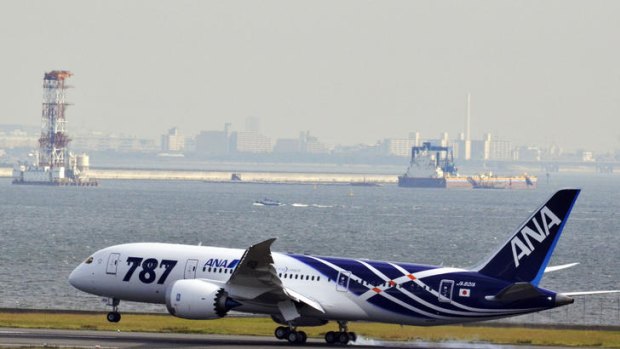Boeing's first 787 Dreamliner has landed in Tokyo, greeted by a phalanx of media, company executives and excited plane spotters.
The plane - painted in the blue and white ANA livery with red highlights - touched down at Tokyo's Haneda airport shortly after 9am (10am AEST) this morning, three years after it was originally promised to All Nippon Airways.
Boeing says the twin-aisle 787 is partly made from lightweight composite materials, meaning that it consumes 20 per cent less fuel than comparable planes, making it a very attractive proposition for airlines in the face of soaring fuel costs.

The first All Nippon Airways (ANA) Boeing 787 Dreamliner arrives at Tokyo's Haneda airport.Credit: AFP
The company has also been touting the larger windows, bigger luggage storage bins and cabins with more humidity than conventional jets, a factor it says will reduce passenger fatigue.
The delivery of the 787, however, comes after a string of technical mishaps and delays that have cost US-based Boeing billions of dollars in lost or cancelled orders.
ANA had originally been told to expect the first of its 55 ordered planes in early 2008.
The airline's president and CEO Shinichiro Ito said the new fleet will play a "key part" in his plans for international expansion.
The Japanese carrier is planning to begin the world's first commercial 787 service on the Tokyo to Hong Kong route in October, followed by regular flights to Beijing and Frankfurt.
ANA, in common with other high-end carriers, is facing increasing competition from budget airlines and is banking on the 787 to boost demand and cut costs.
The company was hit particularly hard by the impact of the March 11 quake, tsunami and nuclear disaster in Japan, which suffocated the incoming tourist industry and crimped domestic demand.
It logged a group operating loss of Y8.1 billion yen ($A107 million) in April-June and responded by cutting services and using smaller planes to cope with the post-quake drop in passenger numbers.
AFP
Sign up for the Traveller newsletter
The latest travel news, tips and inspiration delivered to your inbox. Sign up now.